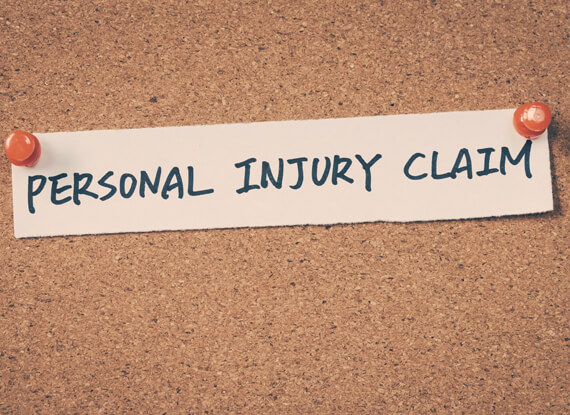SEO for personal injury lawyers - Introduction
With potential clients searching online to find legal representation, mastering Search Engine Optimisation (SEO) is a must in a highly competitive personal injury market. Not least because 96% of people seeking legal advice use a search engine.
This ‘complete guide to SEO for personal injury lawyers’ is your comprehensive resource for navigating the complex world of organic search.
Whether you’re new to the concept or looking to refine your existing strategies, we’ll equip you with the knowledge to boost your online visibility, attract more clients, and grow your law firm practice.
What is SEO for personal injury lawyers?
SEO involves ‘optimising’ a law firm’s website (and wider digital presence), so that it shows up in search engine results pages (SERPs). Ideally, you want to appear near the top on the first page to maximise traffic and new enquiry levels.
By improving various elements of their online presence, personal injury lawyers can improve their rankings on search engines like Google and Bing, making it easier for people to find their services.
The higher your SERP listing, the more likely it is that searchers will visit your site. The more people who visit your law firm website, the more people who enquire. You get where we’re going here!
QUICK JARGON BUSTER
SERPs: Short for ‘search engine results page’, which relates to the pages displayed by search engines like Google in response to a user’s search query.
Key components of SEO for personal injury lawyers
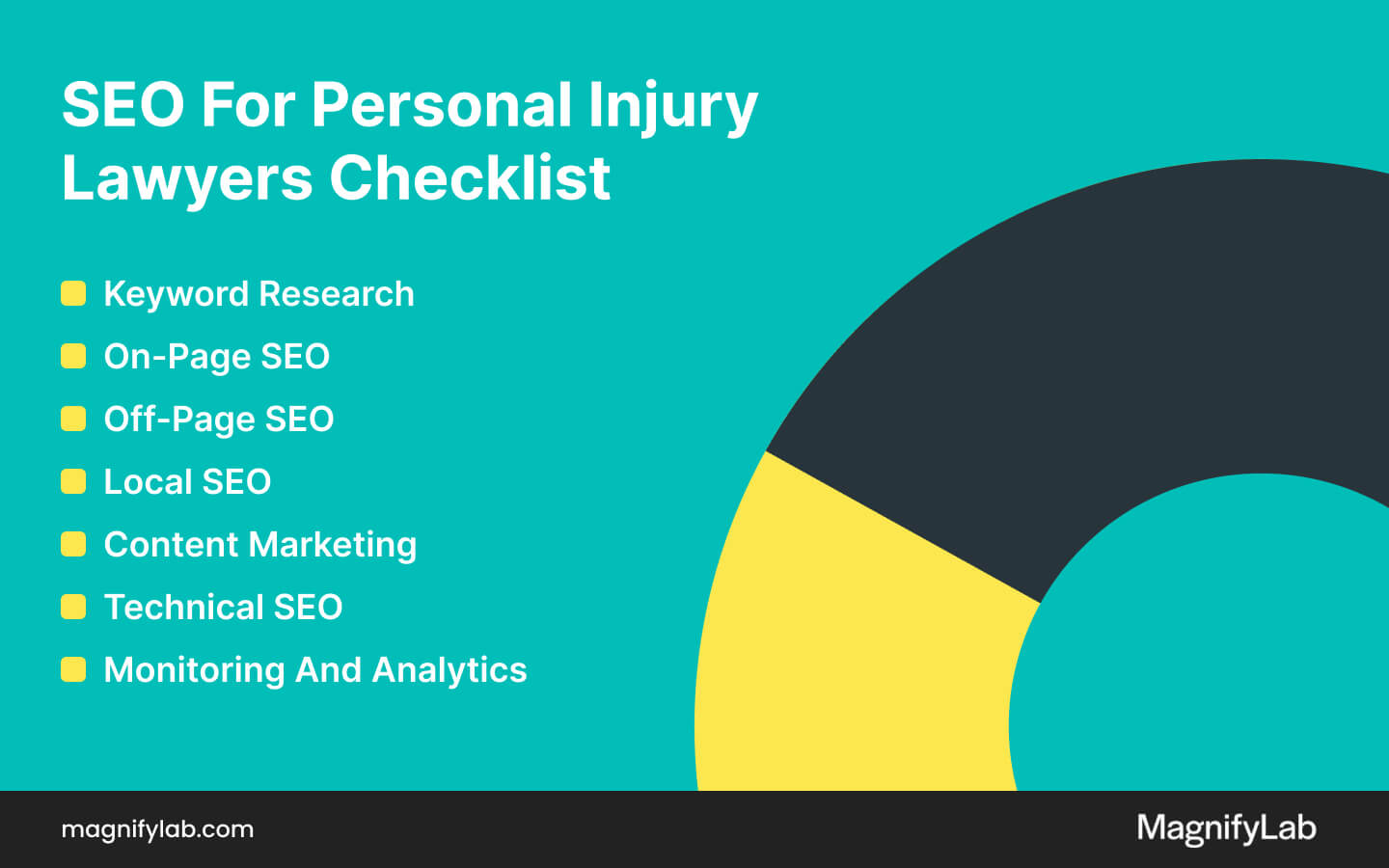
By understanding and implementing effective SEO for law firm strategies, personal injury lawyers can ensure that those in need easily find their services. But personal injury law firm SEO involves many different factors, and a multifaceted approach is needed.
Things to do when boosting your law firm’s search engine ranking include:
| Tactic | What this involves | Goal |
| Keyword research | Identifying and targeting the specific search terms potential clients use when looking for personal injury lawyers. E.g. “car accident lawyer” or “work accident solicitor”. | To inform your SEO and wider marketing strategy. |
| On-page SEO | Optimising individual web pages via the strategic use of pre-identified keywords, high-quality content, meta tags, headings, and internal linking. | Increased chances of ranking higher in search engine results pages and driving relevant traffic. |
| Off-page SEO | Optimising external factors like backlinks from reputable sites, social media, and online reviews. | Builds your website’s authority with the various search engines. |
| Local SEO | Optimising your Google My Business profile, ensuring consistent NAP (Name, Address, Phone Number) information across online directories, and encouraging positive client reviews. | Ensures your website is found when people search for personal injury lawyers near them. |
| Content marketing | Creating and distributing valuable, relevant content. This can include blog posts, case studies, FAQs, videos, and infographics that address common questions and concerns about personal injury claims. | Helps to attract and engage potential clients. |
| Technical SEO | Includes optimising site speed, mobile-friendliness, secure connections (HTTPS), and a well-structured sitemap. | Ensures your website is technically sound to facilitate better crawling and indexing by search engines. |
| Monitoring and analytics | Using tools like GA4, SEMRush and Google Search Console. | Allows you to track the performance of your SEO efforts and make data-driven adjustments to your strategy. |
At-a-glance: benefits of SEO for personal injury lawyers.
- Increased visibility: Helps your personal injury firm to appear at the top of the page when potential clients search for legal assistance, increasing their likelihood of visiting your site.
- Cost-effective marketing: Organic SEO can bring long-term results for personal injury firms without having to pay for clicks or impressions.
- Credibility and trust: High rankings in search results can enhance your personal injury firm’s credibility and trustworthiness in the eyes of potential clients.
- Competitive advantage: Many personal injury law firms are already investing in SEO. To stay competitive, it’s essential to implement and continually refine your SEO strategy.
Achieving the above SEO success requires a strategic approach tailored to the legal industry’s unique needs and challenges. Read on for practical advice on the most effective SEO practices for personal injury lawyers.
QUICK JARGON BUSTER
Crawl: When search engine bots scan a website’s content to understand its context, relevancy and value.
Step 1: Target the right personal injury keywords
Thorough keyword research is essential to identify the terms and phrases potential clients are using to find a personal injury lawyer.
Focus on keywords relevant to your law firm and the services it provides and align these with your target audience’s search intent.
Common types of keywords
Understanding the different types of keywords is essential when optimising your personal injury website.
Broadly, keywords can be categorised into 3 main areas being: informational, navigational, and transactional.
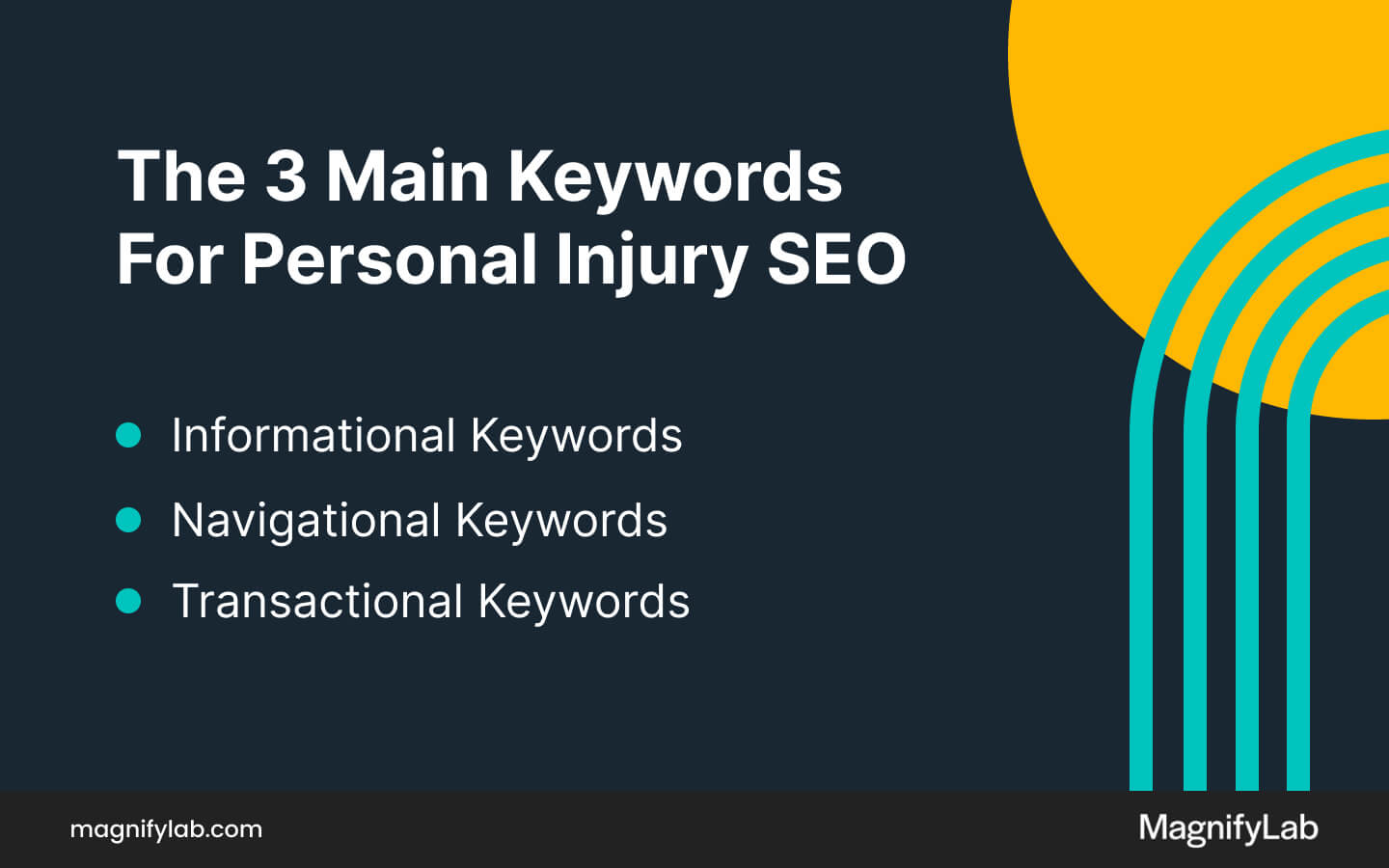
Each keyword type serves a unique purpose and targets different stages of a potential client’s journey.
- Informational keywords for personal injury law firms
Informational keywords are generally used by users at the early stages of the funnel who are seeking information or answers to their questions.Such keywords are often in the form of questions or phrases.
For example:“What to do after a car accident?”
“How to start a personal injury claim?”
“Types of compensation in personal injury cases”
“How to choose a personal injury lawyer”With informational keywords, personal injury law firms can create valuable content that addresses common concerns and educates potential clients.
This helps attract visitors to the website and establishes the firm as a knowledgeable and trusted authority in the field.
- Navigational keywords for personal injury law firms
Navigational keywords are used by people looking for a specific website or page. These keywords often include the name of a law firm or a particular service. For instance:“Apple personal injury lawyers”
“Banana personal injury solicitors email”
“Coconut personal injury no win, no fee”
“Pear personal injury solicitors reviews”Optimising for navigational keywords ensures when potential clients search for your law firm or specific information about your services, they can easily find it.
This is crucial for brand visibility and ensuring users can quickly access the information they need.
- Transactional keywords for personal injury law firms
Transactional keywords are used by individuals ready to take action, such as hiring a personal injury lawyer or scheduling a consultation.Based on the high intent nature of these audiences, competition will be fierce as many personal injury laws fight tooth and nail for the traffic.
Here are some keyword examples:“hire a car accident personal injury lawyer”
“best personal injury solicitor london”
“personal injury lawyer near me”
“work injury lawyer surrey”Transactional keywords indicate a higher intent to engage with your services, making them highly valuable for driving conversions and generating leads.
QUICK JARGON BUSTER
Longtail keyword: A specific and detailed phrase that typically consists of three or more words. These keywords are more specific than shorter, more general keywords and often have lower search volumes but higher conversion rates because they are more targeted to a particular niche or audience intent.
How to find relevant keywords
Identifying the most suitable keywords is crucial when optimising your personal injury law firm’s website. Always aim to balance keyword relevance, volume and difficulty when shaping your law firm SEO strategy.
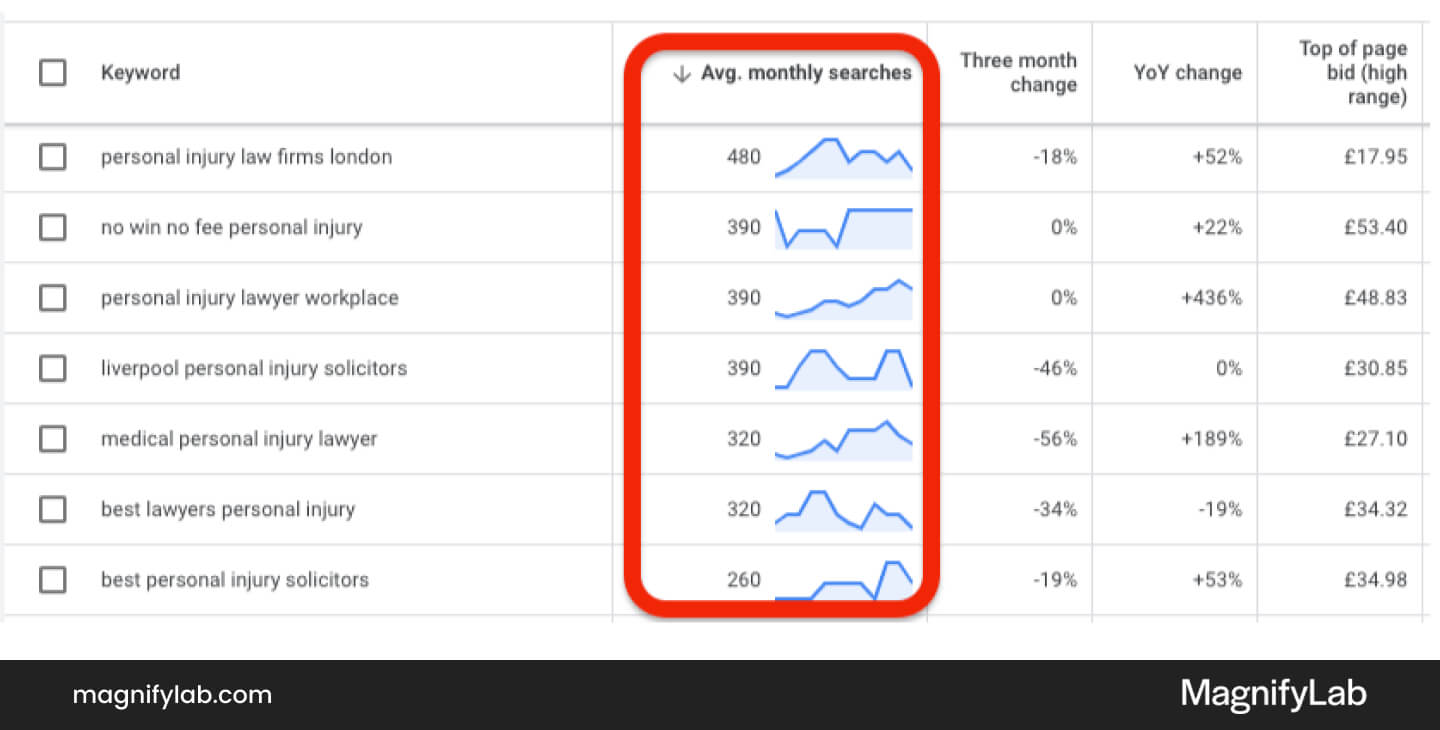
Tools like Google Keyword Planner, SEMrush, and Google Search Console can help you find the valuable terms your potential clients are searching for.
- Google Keyword Planner helps you discover new keyword ideas and provides search volume and competition data.
- SEMrush offers comprehensive keyword research features, including keyword difficulty analysis and competitive insights, allowing you to see what keywords your competitors rank for.
- Google Search Console provides valuable data on the keywords driving traffic to your site, helping you identify opportunities for optimisation.
By leveraging these tools, you can compile a list of high-potential keywords that align with your services and target audience, laying a solid foundation for your SEO for personal injury strategy.
Benefits of keyword research
- Increased visibility: Identifying popular search terms will help your website rank higher in search engine results.
- Targeted traffic: The right keywords will attract those visitors specifically looking for your services, increasing the likelihood of conversions.
- Competitive edge: With insights into the keywords competitors use, you can outperform them.
- Improved user experience: Understanding keywords ensures your content matches what users are searching for, leading to higher levels of satisfaction and engagement.
- Better ROI: By targeting the right keywords, you will attract qualified leads, increasing the chances of converting visitors into clients.
QUICK JARGON BUSTER
Search volume: The number of searches for a specific keyword over a specific timeframe.
Step 2: Optimise your personal injury content for long-term success
Robust keyword research ensures a strong foundation for your ongoing SEO efforts, ensuring sustained visibility and traffic.
But there are more ways to elevate your SEO strategy to ensure it keeps delivering for your personal injury firm, including optimising your legal content.
What is content optimisation?
Content optimisation involves ensuring your website’s content is written and structured in a way that is most likely to be found, understood, and appreciated by your target audience and search engines.
There are a variety of techniques to help improve the relevance, quality, and performance of your content, including:
- Keyword integration: Using relevant keywords naturally throughout your content to match what your audience is searching for.
- Quality: Creating high-quality, informative, and engaging content that provides value to your readers and answers their questions.
- Readability: Ensuring your content is easy to read with clear formatting, short paragraphs, bullet points, and subheadings.
- Meta tags: Optimising meta titles, descriptions, and headers to improve search engine rankings and click-through rates.
- Multimedia. Including images, videos, infographics, and other multimedia elements to make your content more engaging and visually appealing.
- Link building: Adding links to other relevant pages on your website and to high-authority external websites to enhance credibility and user experience.
- Mobile optimisation: Ensuring your content is accessible and readable on all devices, especially smartphones and tablets.
- Page speed: Improving your website’s loading speed to enhance user experience and reduce page load times..
- Regular updates: Keeping your content up to date with the latest information, trends, and legal developments.
- SEO-friendly URLs: Creating clean, descriptive URLs that include keywords and are easy for both users and search engines to understand.
QUICK JARGON BUSTER
Meta tags: snippets of code that tell search engines and web users important information about your web page.
Make sure your content has a goal
Each piece of content you create and add to your website should aim to educate, inform, or reassure individuals navigating the complexities of a personal injury claim.
For instance, a detailed blog post on “Steps to take after a car accident” not only educates readers on their legal rights but also positions your law firm as a trustworthy source of information.
By setting specific goals for content, such as increasing awareness about common types of injuries or outlining the legal process for filing a claim, personal injury lawyers can establish authority and build trust with prospective clients.
8 common types of legal content
Below are the most common types of content which can be used to spearhead your SEO for personal injury strategy.
| Type of Content | Examples | Purpose |
| Blog posts | Informative articles discussing topics such as steps to take after an accident, understanding liability, insurance claims processes and updates on relevant legal precedents. | To educate potential clients about personal injury topics, establish authority, and attract organic traffic through SEO efforts. |
| Articles and legal commentaries | Detailed analyses of recent personal injury cases, changes in personal injury laws, or insights into emerging trends in personal injury litigation. | To provide in-depth analysis and insights into legal issues, demonstrate expertise, and influence potential clients researching their legal options. |
| Practice area pages | Website pages dedicated to specific areas of personal injury law, such as work accidents, slip and fall injuries, medical malpractice, wrongful death, and product liability. | To attract organic traffic, inform potential clients about the law firm’s specialisation in specific areas of personal injury law, showcase relevant experience, and encourage visitors to explore services further. |
| FAQs (Frequently Asked Questions) | Pages or sections answering common questions about personal injury claims, compensation calculations, legal rights, statutes of limitations, and the role of personal injury lawyers. | To answer common questions potential clients have about personal injury claims, clarify doubts, and establish trust by providing precise and helpful information. |
| Case studies | Detailed examinations of successful personal injury cases handled by the firm, highlighting legal strategies, client testimonials, and outcomes achieved. | To illustrate successful outcomes, demonstrate the firm’s track record and legal expertise, and provide social proof through client testimonials. |
| Legal guides | Comprehensive resources on topics like navigating the personal injury claims process, understanding legal terms, negotiating with insurance companies, and preparing for litigation. | To attract organic traffic, provide comprehensive resources to educate potential clients on legal processes, build credibility, and position the firm as a reliable source of information. |
| Webinars and video content | Live or recorded presentations discussing personal injury topics such as common injuries, legal rights, steps to take after an accident, and insights from experienced personal injury attorneys. | To attract organic traffic, engage potential clients with interactive content, provide expert insights on personal injury topics, and nurture relationships through valuable information and advice. |
| Social media posts | Short updates, legal tips, safety reminders, and client success stories shared on social media platforms to engage with followers and potential clients in an interactive manner. | To attract organic traffic, increase brand visibility, engage with followers, share legal tips and updates, showcase client success stories, and encourage interaction and referrals. |
Benefits of content marketing
- Builds trust and authority: Content demonstrates expertise in personal injury law, positioning the firm as a specialist. By creating content that resonates with potential clients, firms can showcase their commitment to client care.
- Education: Content can be used to provide valuable information about legal rights, processes, and types of injuries, helping clients make informed decisions.
- Increased visibility: Firms can improve their search engine rankings by optimising content with relevant keywords and valuable information.
- Generates leads. Quality content attracts potential clients seeking information about personal injury claims and legal representation.
- Long-term ROI: A library of evergreen content continues to attract leads and educate clients over time.
Step 3: Personal injury backlink generation
When it comes to SEO, quality backlinks are essential. Essentially serving as “votes of confidence”, backlinks act as endorsements from other websites, signalling to search engines that your site is reputable and authoritative.
The more quality backlinks a site has from reputable sources, the more likely it is to rank higher in search results. This makes backlink generation a key staple for any personal injury law firm SEO strategy.
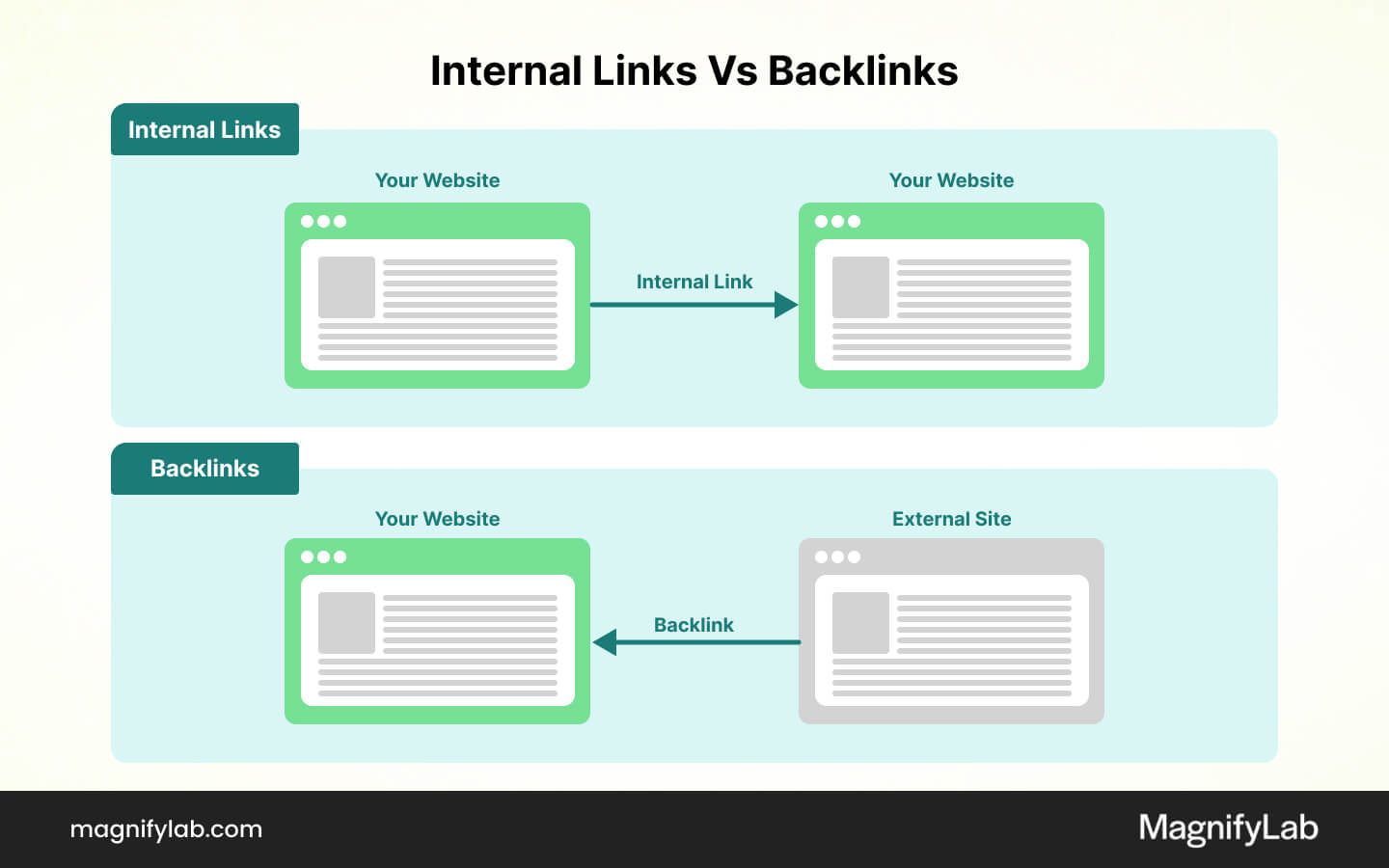
The importance of referring domains
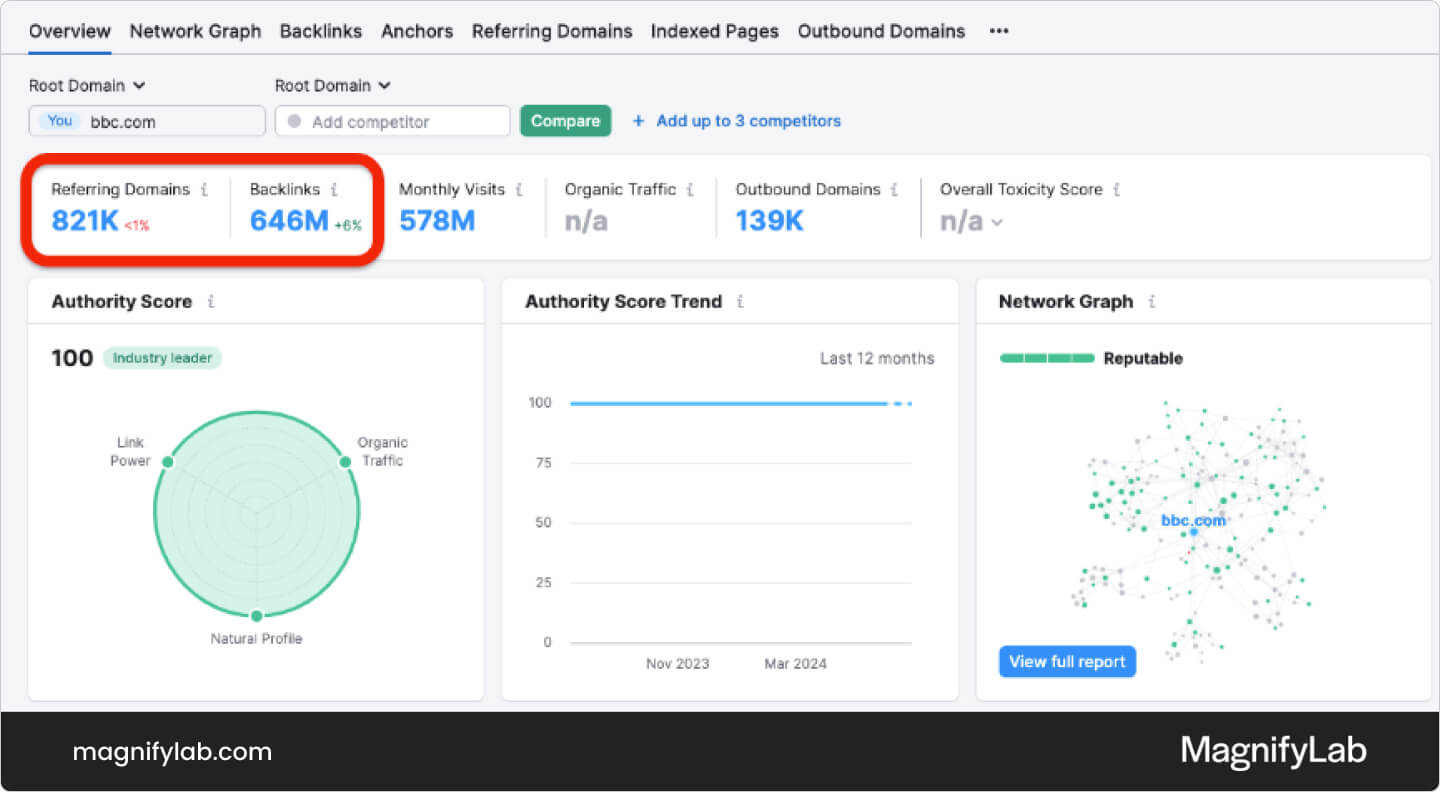
Backlinks help search engine crawlers discover and index your content. As such, referring domains (or backlinks) are pivotal in determining your website’s position in SERPs. But you can’t link from any old website.
Search engines consider the quantity and quality of backlinks when assessing the authority and relevance of a website for particular search queries. Acquiring links from diverse sources, especially those within the legal industry or related fields, can significantly boost your SEO efforts.
Beyond improving your keyword rankings, referring domains also drive targeted “referral traffic” to your website.
Below is a list of the most common types of backlinks that personal injury lawyers can try to obtain for their website.
Common types of backlinks
- Legal blogs and online publications: Guest posts or mentions in legal blogs, industry publications, or news websites that cover personal injury law topics.
- Legal directories: Listings in reputable legal directories such as the Legal 500 and Chambers.
- Local business directories: Listings in local directories like Yelp and Google My Business.
- Legal associations: Backlinks from professional associations such as the Association of Personal Injury Lawyers (APIL).
- Client reviews and testimonials: Links from platforms like Google Reviews, Review Solicitor or Trustpilot.
- Media coverage: Links from local or national news outlets, press releases, or interviews
- Social media profiles: Links from active and authoritative social media profiles
- Partnerships and sponsorships: Backlinks from partnerships with local businesses, sponsorships of community events, or collaborations with non-profit organisations
- Legal resource pages: Links from websites that compile resources for legal information, personal injury resources, or legal aid directories.
Nearly all (92.3%) of the 100 top-ranking domains had at least one backlink(Semrush, 2023)
Benefits of backlink generation
- Enhanced brand authority: Backlinks from reputable sources establish the law firm as a trusted authority in personal injury law.
- Improved visibility: Quality backlinks contribute to higher search engine rankings, increasing visibility to potential clients.
- Increased web traffic: Referral traffic from backlinks brings qualified visitors interested in legal services to the law firm’s website.
- Client acquisition: Effective backlink strategies attract potential clients actively seeking legal representation, leading to higher conversion rates.
- Competitive advantage: Acquiring quality backlinks helps the firm stand out in a competitive legal market, positioning it ahead of competitors in search engine results.
Step 4: Optimise your personal injury website
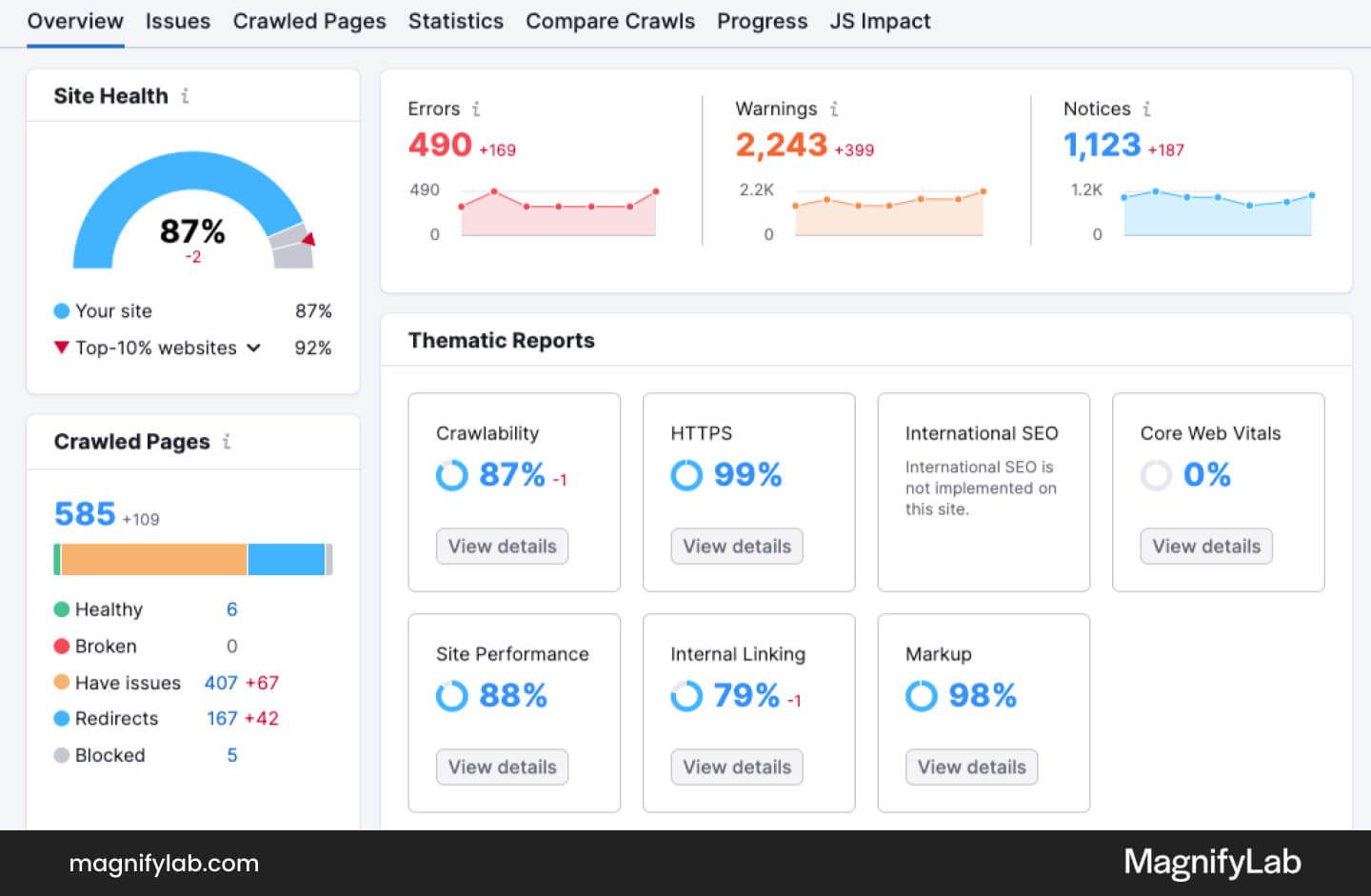
A well-optimised website is a powerful lead-generation tool for personal injury lawyers. However, optimising your legal website goes beyond technical enhancements and aesthetics.
It encompasses a range of strategies to enhance user experience, improve search engine visibility, and ultimately drive more qualified leads.
Best practices for website optimisation
- Use clear navigation: Ensure your website’s navigation is straightforward and intuitive, allowing visitors to quickly find information about your services, practice areas, and contact details.
- Ensure your CTA’s stand out: Strategically place prominent call-to-actions (CTAs) throughout your website, such as “Schedule a Free Consultation” or “Book a Call Today,” using contrasting colours and compelling language to encourage visitor engagement.
- Limit the options presented to users: Streamline the user journey by minimising distractions and guiding visitors towards specific actions that align with your conversion goals.
- Use responsive design: Optimise your website for mobile devices and tablets to ensure a seamless browsing experience across all screen sizes. Responsive design not only improves user satisfaction but also boosts SEO rankings, as search engines favour mobile-friendly sites.
Put your website visitors first
A well-optimised website provides visitors with a seamless and intuitive experience, ensuring they can easily navigate your services, find valuable information, and contact your personal injury law firm.
For personal injury firms, this means structuring their websites with clear navigation, intuitive design elements, and mobile responsiveness to accommodate users accessing their sites from various devices.
By prioritising user experience, they not only retain visitors but also increase the likelihood of converting them into clients who trust in their firm’s ability to handle their cases effectively.
“Google only loves you when everyone else loves you first.”
Wendy Piersall
Benefits of website optimisation
- Enhanced user experience: Improved navigation and accessibility reduce bounce rates and increase engagement.
- Improved visibility: Optimisation boosts visibility in SERPs, driving organic traffic and attracting potential clients searching for legal services.
- Higher conversion rates: Site optimisation will streamline the user journey with clear CTAs, converting visitors into leads and clients.
- Enhanced reputation: A high-functioning website that delivers a great user experience (UX) will help position your firm as a trusted authority in personal injury law.
- Competitive advantage: A well-optimised website helps your firm stand out in a competitive legal market, positioning it ahead of competitors in search engine results.
Step 5: Local SEO and Google My Business
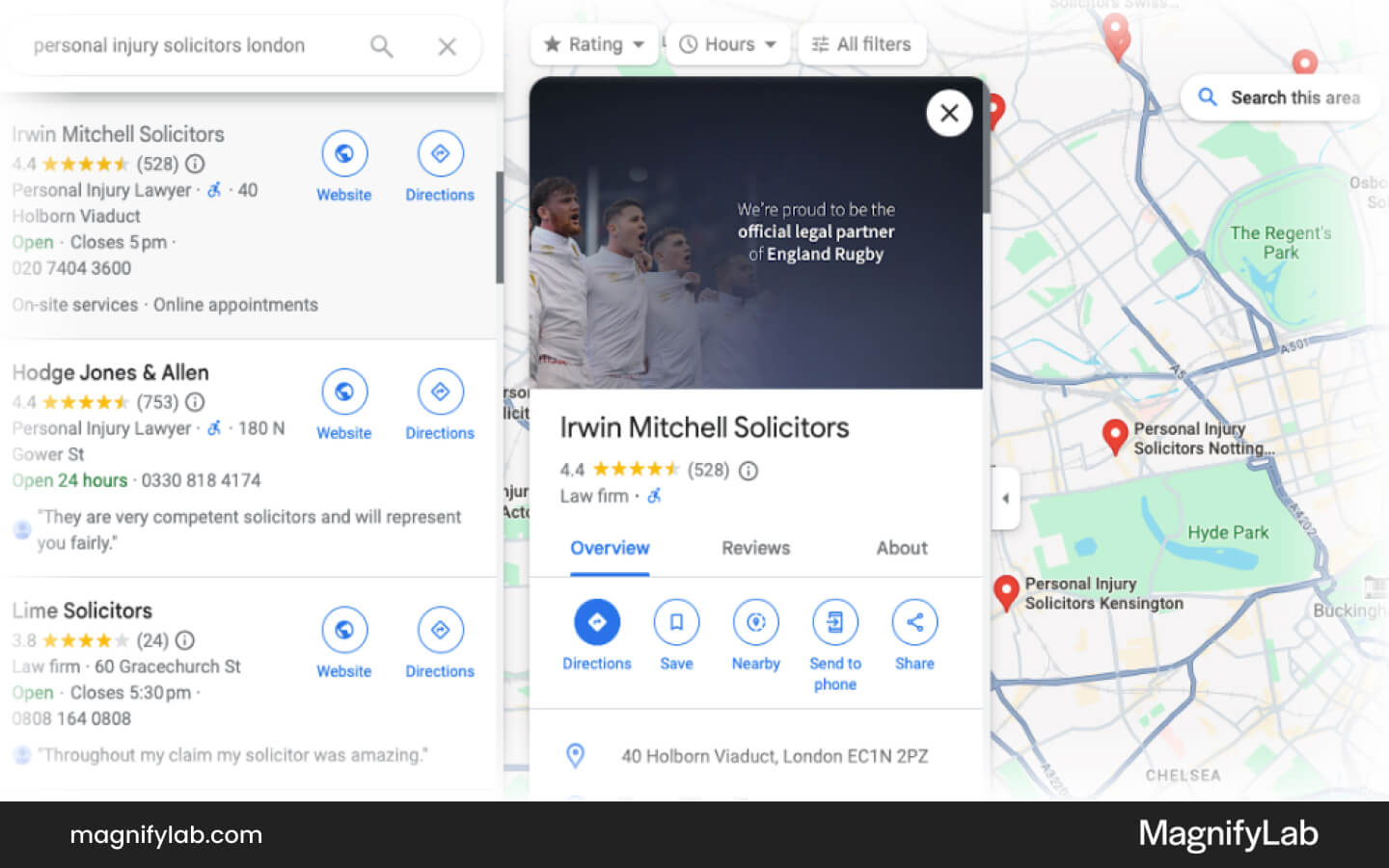
Personal injury law firms in the UK can gain significant benefits by harnessing the power of local SEO and Google My Business (GMB).
These digital marketing strategies enhance visibility, drive targeted traffic, and increase client enquiries.
But how do you strengthen your personal injury firm’s online presence in the local market?
What is local SEO and why is it important?
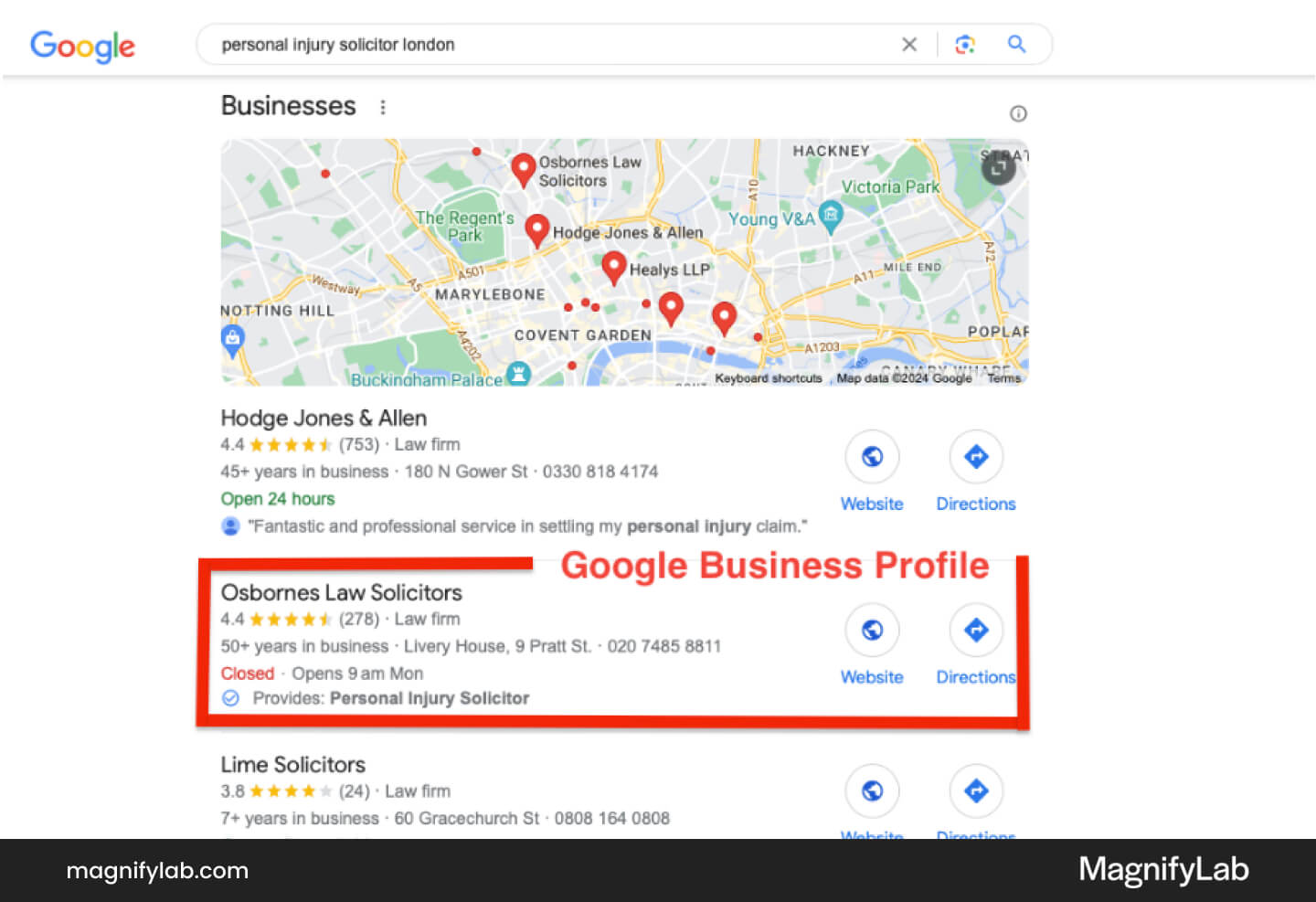
Local SEO refers to the techniques involved to optimise your website and online presence to attract more business from relevant local searches.
For personal injury lawyers, this means ensuring your firm appears prominently in local search results when potential clients seek legal assistance in their geographic area.
Optimising your online presence for local searches can yield significant benefits and ensure long-term client acquisition and retention success.
Several factors influence how well your personal injury firm ranks in local search results, including:
- Relevance: Your website content must match what potential clients are searching for. Optimising for relevant keywords and providing valuable, location-specific information improves relevance.
- Locality: Proximity to the searcher’s location is a critical factor. Personal injury firms close to potential clients are more likely to appear in local searches.
- Popularity: Positive client reviews, citations in legal directories, and mentions on reputable websites enhance your firm’s authority and visibility.
11 steps to optimise your local SEO ranking
- Conduct keyword research focusing on local search terms such as “personal injury lawyer Aberdeen” or “Bristol car accident solicitors.”
- Use the various keyword tools to identify relevant local keywords with moderate to high search volume.
- Include local keywords naturally within your content to attract local searchers seeking personal injury legal services.
- Optimise your Google My Business profile (details on how to do this coming up!)
- Create dedicated web pages for each service area or location your firm serves. For instance, personal injury lawyers Manchester, personal injury lawyers Nottingham etc. Optimise these pages with local keywords and include relevant information such as local landmarks, neighbourhoods, and client testimonials in those areas.
- List your firm in local business directories, legal directories, and chambers of commerce specific to your geographic area.
- Ensure your NAP (Name, Address, Phone Number) information is consistent across all online platforms, including your website, social media profiles, and local directories. Consistency builds trust with both clients and search engines.
- Earn backlinks from local businesses, community organisations, and local news outlets. Consider participating in local events, sponsorships, or collaborations that can lead to local backlinks and enhance your firm’s local authority.
- Encourage satisfied clients to leave positive reviews on your GMB profile and other local review sites. Respond promptly and professionally to all reviews to demonstrate your firm’s engagement and commitment to client satisfaction.
- Ensure your website is mobile-friendly and optimised for fast loading speeds, as mobile usability is critical for local SEO.
- Create blog posts, articles, and FAQs that address local legal issues, news, and events relevant to your practice areas and service locations.
Enhance your local presence with Google My Business
GMB is a free tool provided by Google that allows businesses, including personal injury law firms, to manage their online presence across Google, including Search and Maps.
GMB listings prominently display your law firm’s name, address, phone number, and business hours, providing essential information to potential clients searching for local legal services.
GMB also allows clients to leave reviews and ratings, which can influence your potential clients’ decision-making process, as positive reviews and high ratings build trust and credibility for your firm.
To optimise your firm’s GMB presence, you should:
- Claim and verify your listing
If you haven’t already, start by claiming your GMB listing. Go to Google My Business, search for your firm’s name, and follow the verification process (usually via postcard, phone, or email). - Complete your business profile
Ensure all fields in your GMB profile are filled out accurately and completely. This includes your firm’s name, address, phone number, website URL, business hours, and category.Upload high-resolution photos that showcase your firm, office exterior and interior (if appropriate), team members, and any relevant images that represent your services. Visual content helps potential clients get a feel for your firm and builds trust.Craft a concise and informative business description highlighting your firm’s services and unique value proposition. Use relevant keywords naturally to improve visibility in local searches.
Enable messaging so potential clients can contact your firm directly through GMB. If your firm offers consultations or appointments, you can also integrate a booking button, making it easier for clients to schedule directly from your profile.
- Collect and manage client reviews
Encourage satisfied clients to leave positive reviews on your GMB profile. Respond promptly to all reviews, both positive and negative, to show responsiveness and professionalism. Engaging with reviews demonstrates your firm’s commitment to client satisfaction.
82% of people rely on search engines to access local information.
(Google)
Benefits of local SEO
- Increased local visibility: By optimising your website for location-specific keywords (e.g., “personal injury lawyer London” or “accident solicitor Manchester”), you can attract clients who are specifically searching for legal services in your vicinity.
- Google Maps integration: Optimising for Local SEO helps your firm appear in Google Maps results, making it easier for clients to find your office location and contact information.
- Competitive edge: Local SEO strategies such as local citations, local business listings, and geo-targeted content help your firm stand out against local competitors in search engine rankings.
- Trust and credibility: Positive client reviews and accurate business information build trust and credibility among potential clients.
- Increased client enquiries: Effective local SEO and GMB optimisation can lead to a higher volume of client inquiries, ultimately driving business growth.
Ready to unlock your personal injury firm’s growth through the power of SEO? Contact our experienced team today.
Final thoughts
SEO is not just important but essential for personal injury lawyers. The growing trend of seeking legal representation online underscores the need for law firms to embrace SEO practices.
The advantages such as increased visibility, targeted marketing, cost-effectiveness, long-lasting outcomes, and improved user experience highlight the value of SEO as an investment.
By putting into the practice the 5 main SEO principles outlined on this ‘SEO for personal injury lawyers’ guide, you will gain a competitive edge and drive new instructions for your firm.
However, if you require a bespoke strategy and expertise from our team, we’re ready to help.Whether you operate solo or within a larger practice, we bring all the knowledge and expertise to help scale your personal injury leads online.
Get in touch for your free digital marketing review today by calling 020 7205 2755 or simply complete the enquiry form on this page.
